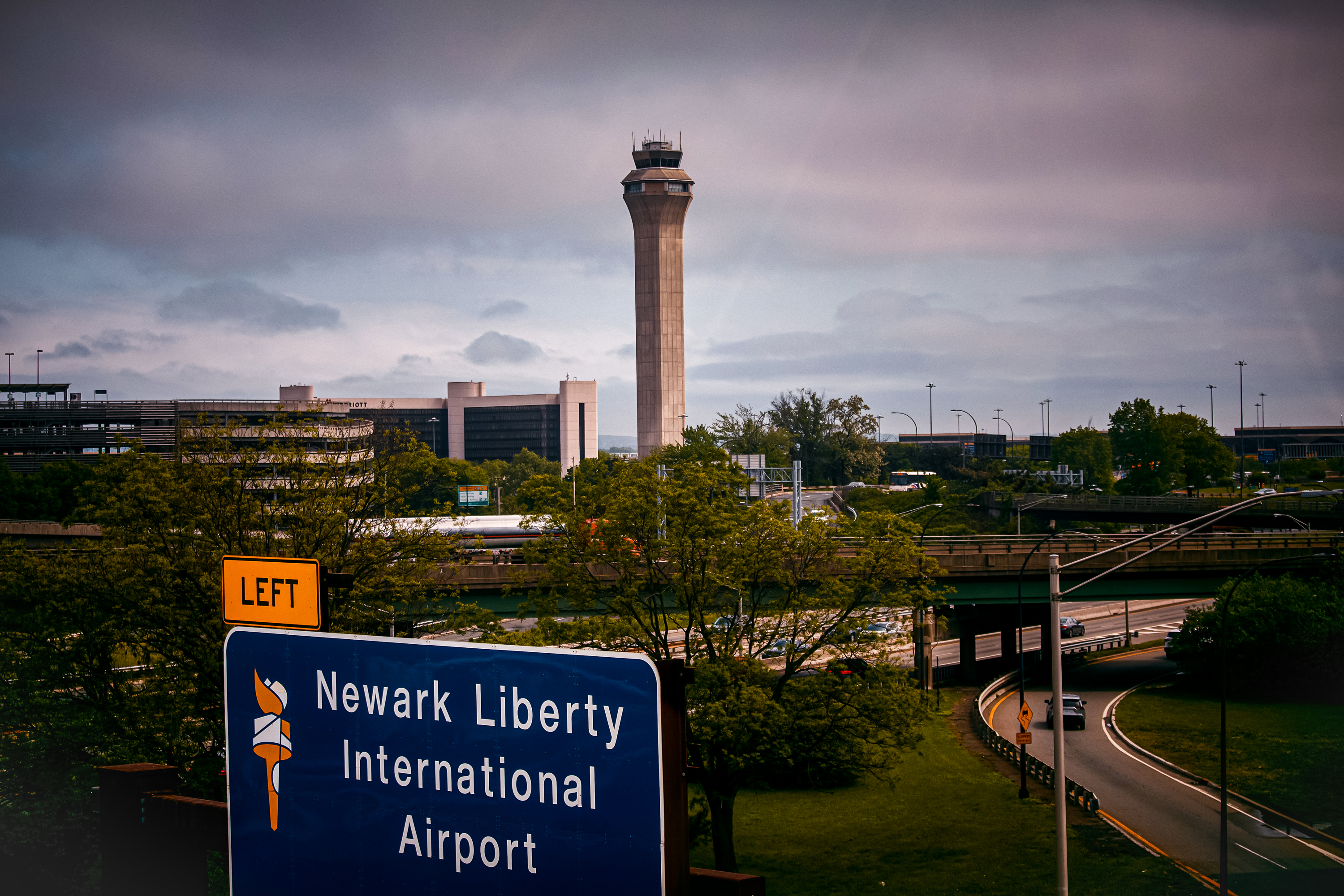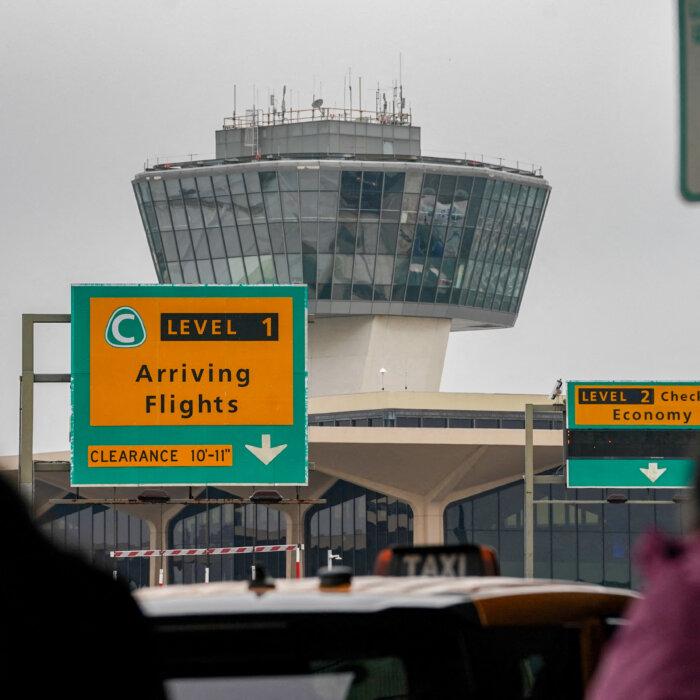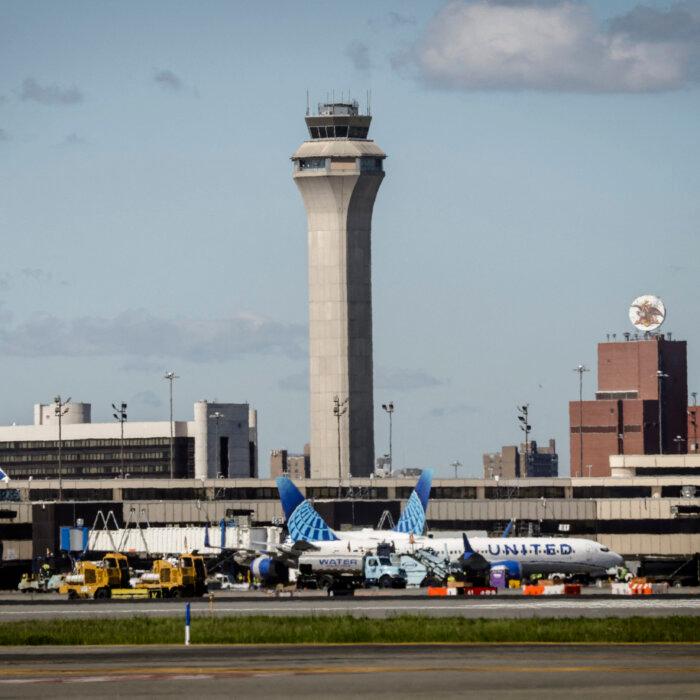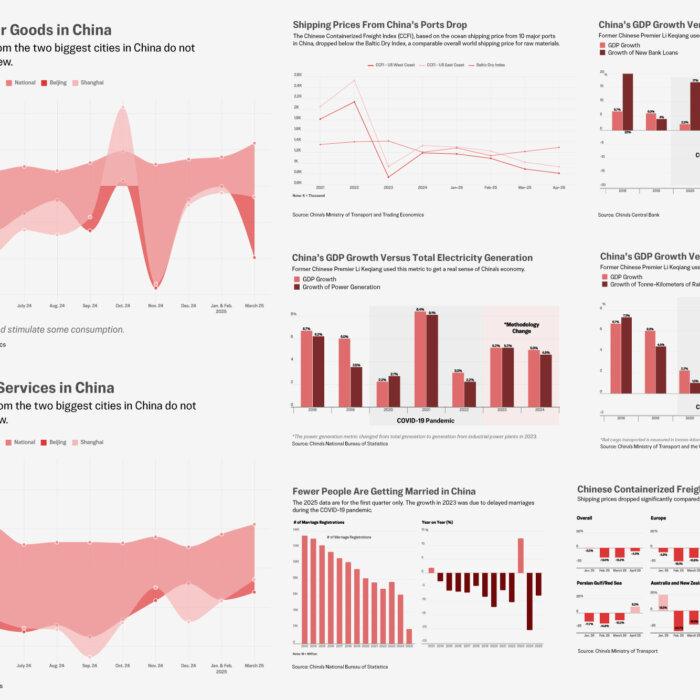Critical equipment failures at Newark Liberty International Airport in New Jersey have caused air traffic controllers to lose contact with planes in three separate incidents over the past several weeks, causing hundreds of flight delays and cancellations and leaving passengers on edge.
Issues leading to the communication blackouts include prolonged staffing shortages, aging technology and infrastructure, and the closure of one of Newark’s busiest runways.
Top government officials have responded quickly.
At a Cabinet meeting just days after the first outage, Transportation Secretary Sean Duffy stressed the urgency of building “a brand new system.”
If the nation’s aging air traffic control infrastructure—including technology that “looks like it’s out of a 1980s movie”—is not addressed, Duffy warned, “people will lose their lives.”
In an interview on NBC News’ “Meet the Press” on May 11, Duffy said key copper data lines between two communication hubs handling Newark’s airspace were being replaced with fiber optics, and a glitch in air traffic control’s computer software was being repaired.
Meanwhile, the Federal Aviation Administration (FAA) has slowed traffic in and out of the airport and deployed an emergency task force, Duffy announced May 12.
“Other airports across the nation could see similar problems like in Newark if the FAA does not take this investigation seriously,” Schumer said on the Senate floor on May 5.
What Happened?
The first incident occurred on April 28, when a primary communication line between air traffic control and airplanes failed for 30 seconds, leaving workers in the control towers in the dark and unable to communicate with pilots.The backup system also failed to fire, Duffy said.
The chaos was so stressful for workers in the control tower that several opted to take trauma leave, according to the National Air Traffic Controllers Association, an air traffic controllers union.
“I don’t want to be responsible for killing 400 people,” said Stewart, one of the controllers who took trauma leave due to stress from the incidents.
And on May 5, the FAA announced it was slowing the rate of arrivals into Newark, as the government worked to repair its aging communications infrastructure.
This time the outage lasted for 90 seconds, disabling contact with pilots and with the radar screens essential for seeing the flow of air traffic in real time.
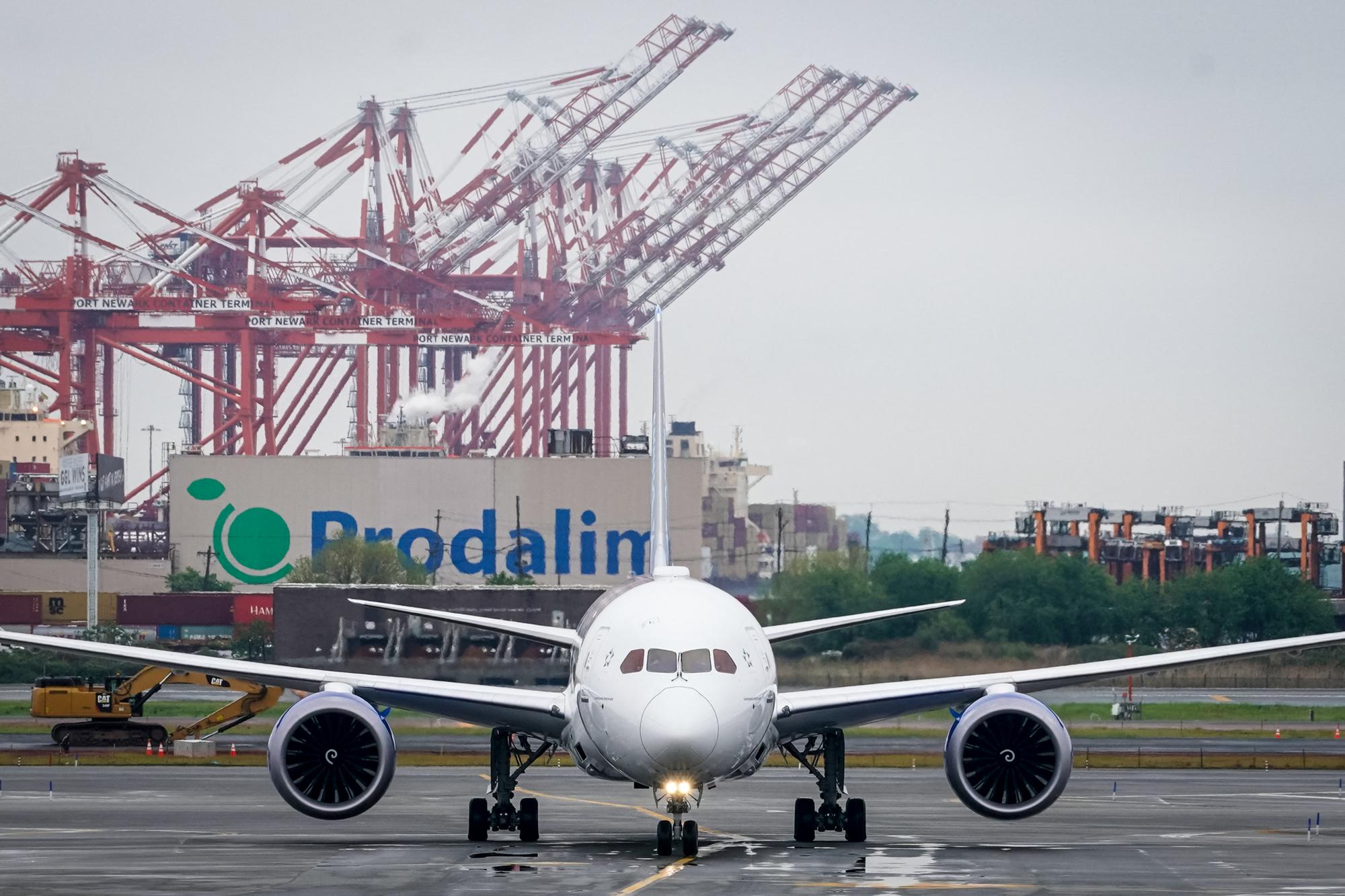
The reduction in controller staffing and air traffic forced two commercial pilots to rent a car and drive from Washington Dulles International Airport to Newark to make a flight last week, after their connection faced indefinite delays, said Scott Seeberger, a veteran pilot for a commercial airline.
“I’m sure that numerous passengers are probably doing the same,” Seeberger told The Epoch Times. “Newark has become such an inconvenience for so many people.”
He said incidents like that are not out of the ordinary for Newark, once the world’s busiest airport and still a major hub, particularly for travelers in and out of the New York metro area.
What’s the Cause?
The problems that led to Newark’s recent issues include years of chronic staffing shortages involving controllers, outdated and overloaded infrastructure, and a computer software glitch.Staffing Shortage
Staffing issues have plagued the FAA for years. They’re a key piece of the puzzle to unraveling Newark’s problems.The shortage was compounded when many veteran controllers opted to retire early during the COVID-19 pandemic. Last year, when Congress passed the 2024 FAA Reauthorization Act, the FAA said it was short thousands of controllers.

Outdated Technology
Newark’s technological and equipment issues are multifaceted. They include a software glitch that affected air traffic control and failing infrastructure responsible for carrying data between hubs in New York and Philadelphia.As a result of the outdated infrastructure, as data came in between the two hubs, it overloaded some of the airport’s copper telecommunication lines, causing the system to go down.
There was also a software glitch that the government is working to fix, Duffy said.
Moving Air Control From New York to Philadelphia
Another factor in the airport’s woes was a decision last year from the FAA to reassign control of Newark’s airspace from a communications hub in New York to one in Philadelphia.The air traffic controllers handling Newark are now located more than 100 miles south, in Pennsylvania, while the radar data is still being sent to a facility in New York and then fed down aging copper data lines to Philadelphia.
Buttigieg responded by saying Duffy is just playing “politics” and said as transportation secretary he had worked on launching contracts to replace the copper wire system with fiber optics.
Duffy said the decision to move Newark’s air control was particularly dangerous because the Philadelphia facility still has to be fed radar data from New York through old, copper data lines, which are already vulnerable.

How and When Will It Be Fixed?
The proposed solutions to Newark’s problems vary.They include a computer software patch, increasing staffing, replacing copper data lines with fiber optics, plans to build a new radar facility in Philadelphia, and an FAA emergency task force.
Duffy is fast-tracking contracts with telecommunications companies such as Verizon to quickly replace the old copper data lines.
He’s also working to patch the computer software in hopes the issues do not occur elsewhere. The new lines should be up and running in roughly two weeks, and will hopefully prevent future blackouts, he said.
There are also plans to build a new facility in Philadelphia to handle Newark’s radar and data load to stop the breakdowns. While it was initially estimated to take six to eight months, the secretary told reporters May 7, he hopes to have it built by the end of the summer.
While there could be issues with the copper data lines, Seeberger said that, theoretically, it shouldn’t matter if the controllers viewing the data do so on computers in New York or on ones more than 100 miles away in Philadelphia. It’s the staffing that’s most important, he said.
“The FAA does not have an adequate number of air traffic controllers to handle the high volume of aircraft flying in and out of Newark,” he said.
Duffy said Congress has given him the authority to extend the retirement age for air traffic controllers from 56 to 61 to increase retention.
However, extending the retirement age is not enough, he noted. Because controllers can retire after 25 years, many opt to retire at age 50, and those veteran workers are among the best employed by the FAA, Duffy said.
That’s why he’s proposing to give veteran controllers a 20 percent upfront bonus to stay on the job and defer their retirement.
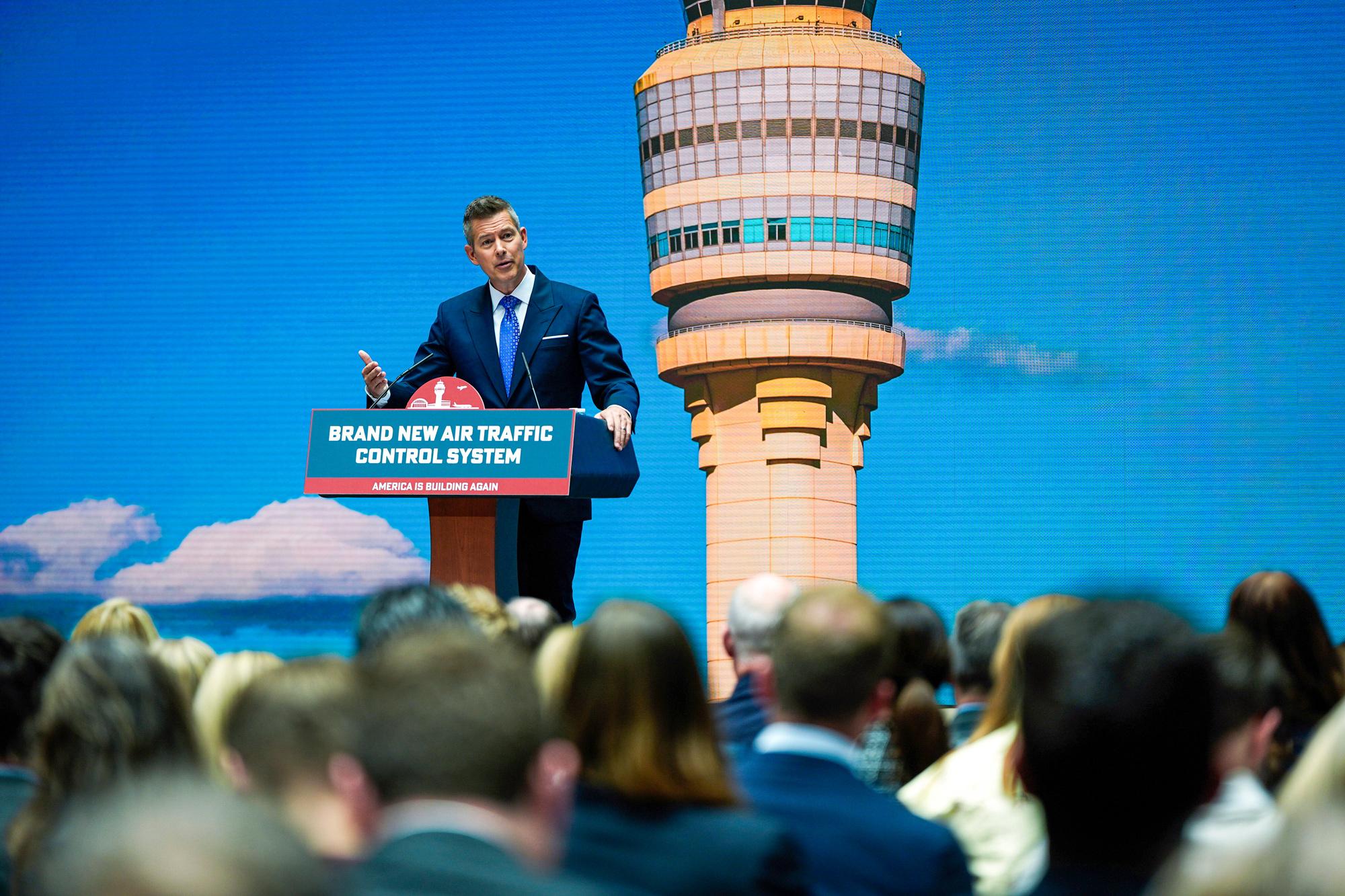
The Transportation Department has said it will do everything it can to incentivize new recruits and offer additional assistance to those currently in the FAA Academy to increase retention rates and address the agency’s years-long worker shortage. The process, however, takes time.
Lastly, the FAA is slowing traffic in and out of that airport for at least the next several weeks to prevent passengers from facing additional delays, Duffy said.

Is It Safe to Fly Out of Newark?
Many Americans are left wondering whether it’s safe to fly out of Newark, and whether the airport’s issues have affected air travel throughout the rest of the country.The government has repeatedly assured travelers that the airport is still safe as it works on permanent solutions to its equipment failures.
As to whether or not the issues are isolated to Newark, Duffy said that the airport’s aging infrastructure is not unique, and airports throughout the country are grappling with similar issues.
“We have to fix this, because what you see in Newark is going to happen in other places across the country,” Duffy said on “Meet the Press.”
Regardless of the proposed fixes, Seeberger said the slowdown of traffic going in and out of Newark is an inconvenience for countless passengers.
“They’re traveling on vacation, getting to see a loved one for a special event, or they’re going to a very important business meeting. The American public relies upon commercial aviation, and this particular airport has caused so many issues along the East Coast.”

Broader Overhaul Efforts
While some of Newark’s challenges are unique to its infrastructure, those problems are characteristic of the aging technology afflicting the nation’s airports overall—an issue that both Duffy and Trump have highlighted in their plans to overhaul and modernize America’s air traffic control.Those plans include moving to fiber optic data lines, rebuilding some control towers and hubs, new ground radar sensors on airport tarmacs, and implementing new radios in towers.
With the right funding from Congress, that can be achieved in three to four years, Duffy said.
“We’re using floppy disks in our system. We have headphone jacks that we’re plugging and unplugging. Think back to the 1980s, if you were even alive. That’s the system that we’re using for air traffic control,” Duffy said.
